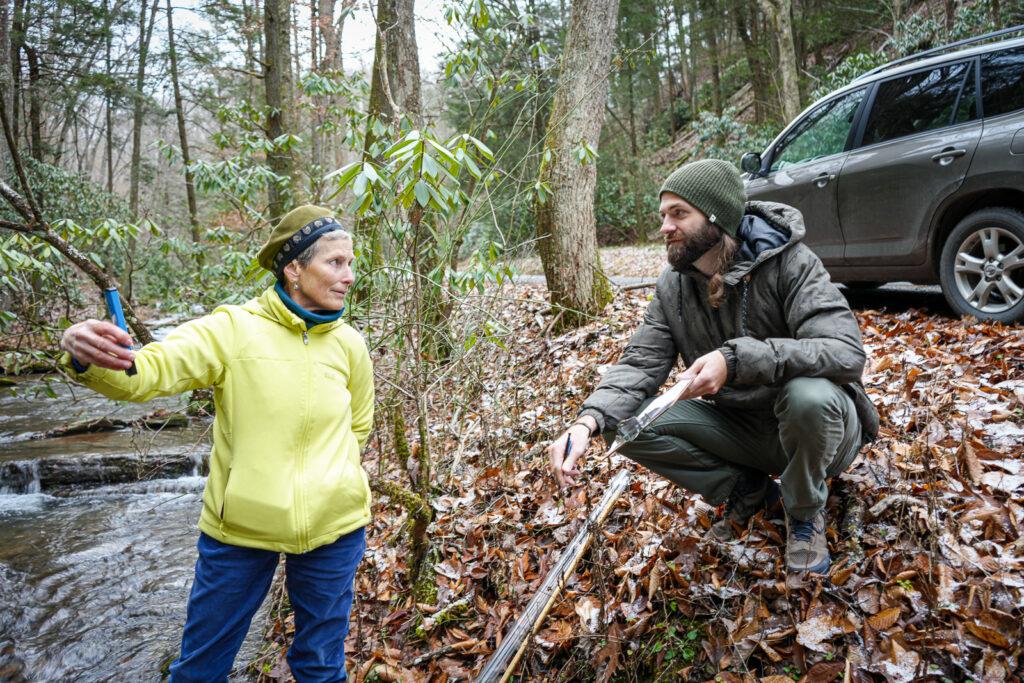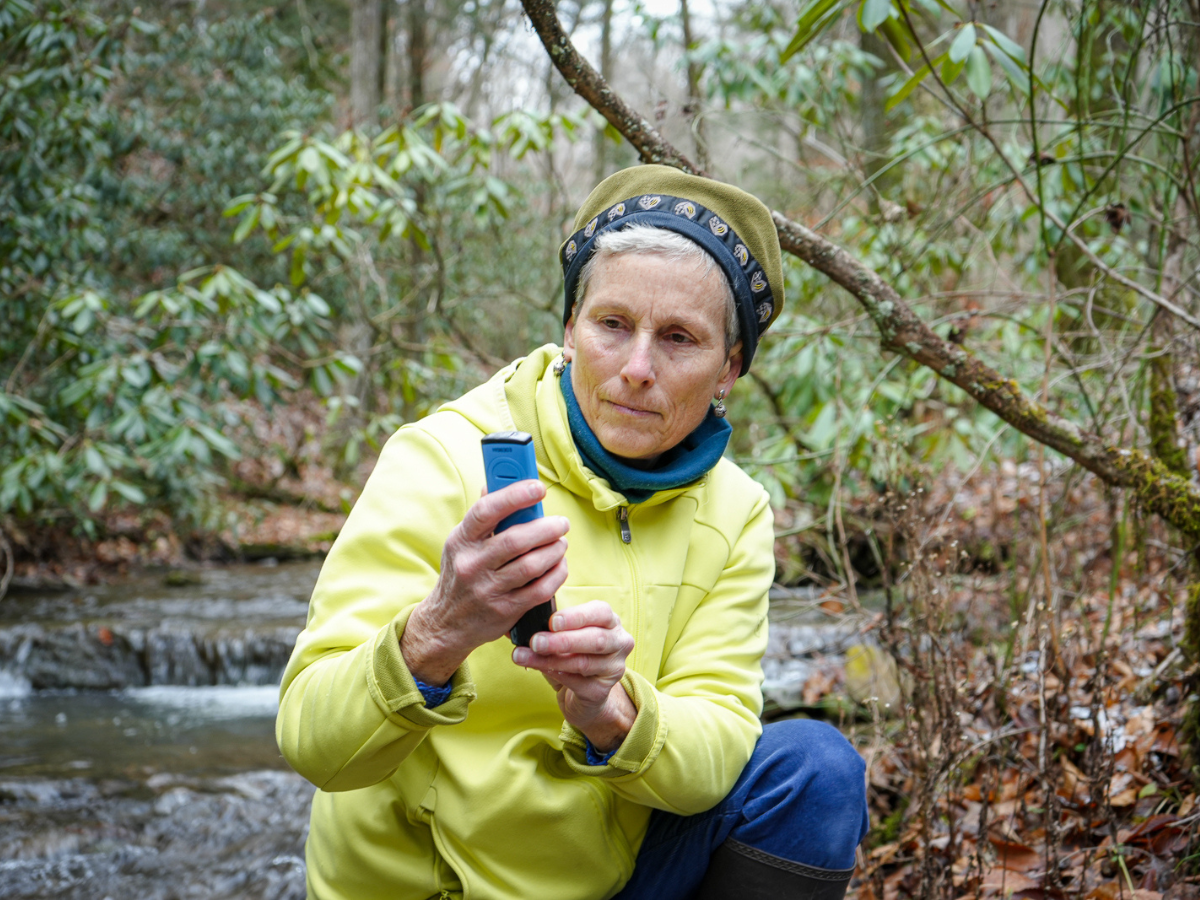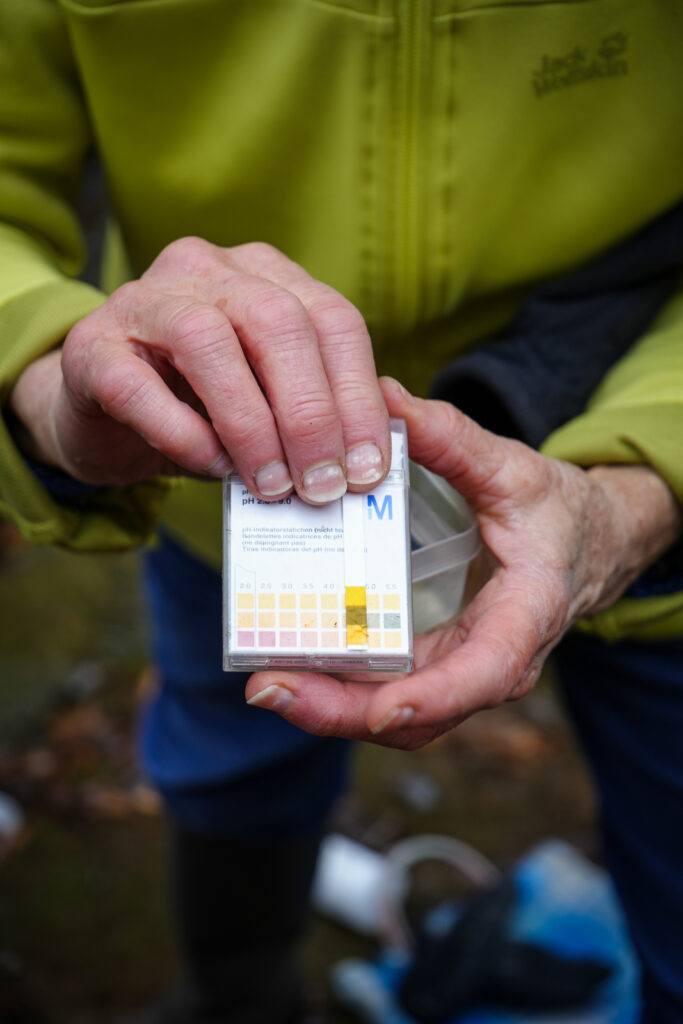Mimi Kibler takes a stream water measurement at Dry Run on Sugarlands Rd. near Hambleton, West Virginia.
In June 2022 a Water Quality Monitoring Task Force was created through a collaborative effort with the Rivers Committee of the West Virginia Highlands Conservancy, Friends of the Cheat, West Virginia Rivers Coalition, Trout Unlimited, Corridor H Alternatives and members of the public to conduct water quality monitoring of streams and wetlands, beginning with those affected by construction of Corridor H (see The Highlands Voice, May 2022).
The water quality monitoring has been divided into three phases: baseline monitoring prior to construction, monitoring during construction and post-construction. In the current baseline monitoring phase, members of the task force visit their respective stream sites once a month. As construction ramps up, so will the frequency of testing.
“It’s shocking to see how much cutting and scraping the highway construction is causing all around us,” said Mimi Kibler, West Virginia Highlands Conservancy member and water quality testing volunteer. “Thank goodness there are organizations keeping an eye out for environmental damage. If stream conditions deteriorate as construction gets closer, data from stream testing volunteers can provide crucial evidence of the cause. Alain and I are glad we can do our part by monitoring one stream.”
Volunteers test for turbidity, a measure of water clarity; conductivity, the ability of water to pass an electrical current; pH, a term used to indicate the alkalinity or acidity of a substance; water temperature; and they also take a photo upstream and downstream. Results from the stream health testing are then loaded by participants to the Citizen Science public database created for Trout Unlimited.



